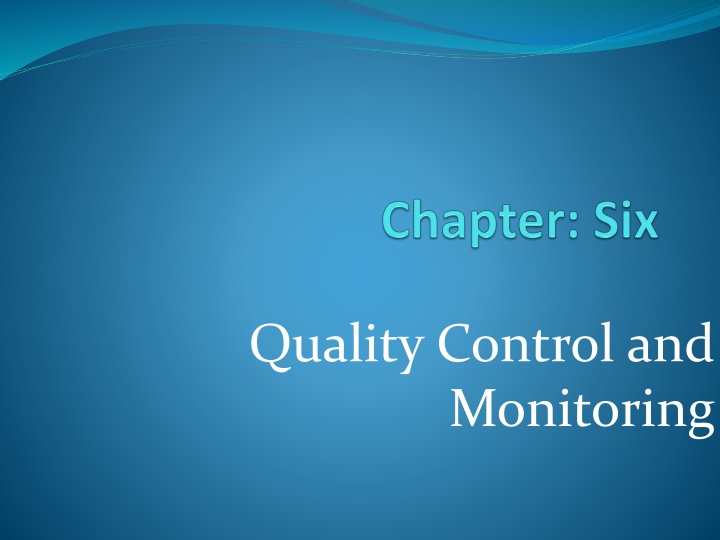Quality Control and Monitoring Procedures in Construction Projects
Quality control and monitoring procedures in construction projects play a crucial role in ensuring the quality and safety of structures. The process involves identifying defects, carrying out tests, correcting defects within specified timeframes, and taking measures in case of non-compliance. Engineers are responsible for ensuring that the construction meets all quality standards and specifications to maintain structural integrity and durability.
Download Presentation

Please find below an Image/Link to download the presentation.
The content on the website is provided AS IS for your information and personal use only. It may not be sold, licensed, or shared on other websites without obtaining consent from the author.If you encounter any issues during the download, it is possible that the publisher has removed the file from their server.
You are allowed to download the files provided on this website for personal or commercial use, subject to the condition that they are used lawfully. All files are the property of their respective owners.
The content on the website is provided AS IS for your information and personal use only. It may not be sold, licensed, or shared on other websites without obtaining consent from the author.
E N D
Presentation Transcript
Quality Control and Monitoring
Quality Control Clause 33: Identifying Defects The Engineer shall check the Contractor s work and notify the Contractor of any Defects that are found. Such checking shall not affect the Contractor s responsibilities Clause 34: Tests If the Engineer instructs the Contractor to carryout a test not specified in the Specification to check whether any work has a Defectand the test shows that itdoes, the Contractor shall pay for the test and any samples. If there is no Defect, the test shall be a Compensation Event. 2
Continued Clause 35:Correction of Defects The Engineer shall give notice to the Contractor of any Defects before the end of the Defects Liability Period, which begins at Completion, and is defined in the Special Conditions of Contract Every time notice of a Defect is given, the Contractor shall correct the notified Defect within the length of time specified by the Engineer s notice. The Defects Liability Period shall be extended foras long as Defects remain to be corrected. Clause 36: Un corrected defects If the Contractor has not corrected a Defectwithin the time specified in the Engineer s notice, the Engineer will assess the cost of having the Defect corrected, and the Contractor will pay this amount. 3
Quality control EBCS2-1995, 9.4 measures to be taken in case of non- compliance If the quality of the structure is found to be in doubt after an inspection or from the test results, then a special examination shall be made to verify the soundness of the information received and to asses the actual strength of the structure constructed with possible recourse to more accurate methods of calculations. Sequence of measures The following sequential measures shall be taken where the results of compliance control tests or inspection are unsatisfactory: a) The position of concrete which does not fulfill the compliance criterion shall be identified b) The structural safety shall be checked by appropriate calculations on the basis of the actual tests which did not comply. If safety is assured, the concrete can be accepted. c) If the structural safety or durability are not assured, then the strength of the concrete shall be examined by taking drilled cores or by non- destructive methods. The results of the tests shall be assessed on the basis of the prescribed acceptance criterion, taking into account any differences in age.
Continued d) If this new information's shows that structural safety is assured, the concrete may be accepted after it has been decided whether repairs are necessary to ensure durability e) If the results of check tests by non-destructive methods show that the quality of concrete is inadequate or show other defects, the engineer may require a loading test to be made which shall then carried out in accordance with procedure set in 9.4.4 f) If the structural safety and durability are not assured, then the possibility of strengthening the structure must be investigated. If strengthening is not feasible, then the concrete shall be rejected, and the structure or member demolished or given a reduced structural grading by limiting its service rating, as appropriate.























